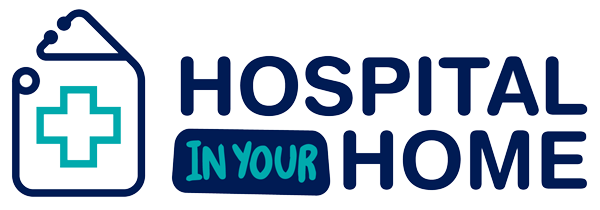How Hospital-at-Home Programs Are Changing the Landscape

Hospital-at-home programs are transforming the healthcare landscape, offering innovative solutions to traditional hospital care.
Integrating the comfort of home with the rigor of hospital-level treatment, these programs are redefining patient care.
This trend, emerging from the convergence of technological advancements and shifting healthcare demands, represents a pivotal shift in how we perceive and receive medical care.
Hospital at Home (HaH) programs began gaining traction in the late 20th century, with pioneering efforts in Australia and the United States.
The initial concept was simple yet revolutionary: deliver hospital-grade care in a patient’s home for conditions traditionally managed in hospitals.
Today, these programs are at the forefront of healthcare innovation, blending medical expertise with technological advancements to create a new paradigm in patient-centered care.
The Rise of Hospital-at-Home Programs
Global Trends Fueling the Rise
The growth of hospital-at-home programs is not a random phenomenon but a response to global trends reshaping healthcare needs.
Aging populations worldwide present a significant challenge to healthcare systems, with older adults requiring more frequent and intensive care.
According to the World Health Organization, the number of people aged 60 and older is expected to double by 2050. This demographic shift demands innovative care models that are both sustainable and scalable.
Technological advancements in telemedicine and remote monitoring are other critical factors. The past decade has seen remarkable progress in digital health technologies, enabling remote diagnosis, monitoring, and treatment.
Wearable devices, telehealth platforms, and advanced diagnostic tools have made delivering complex care in a patient’s home feasible.
Catalysts from the COVID-19 Pandemic
The COVID-19 pandemic accelerated the adoption of hospital-at-home programs.
With hospitals overwhelmed and the risk of infection high, healthcare providers and patients sought safer, more efficient ways to deliver and receive care.
HaH programs emerged as a viable solution, alleviating the strain on hospital resources while providing safe, effective patient care. During the pandemic, many healthcare providers reported a surge in HAH services.
For instance, a study published in the Journal of the American Medical Association (JAMA) highlighted the successful implementation of HaH programs in response to COVID-19, showing reduced strain on hospital resources and high patient satisfaction levels.
Understanding How Hospital-at-Home Programs Operate
- Emphasis on Medical Technology: Hospital-at-home programs heavily utilize medical technology, ranging from essential equipment like blood pressure monitors to more advanced tools like portable X-ray machines. This technology is crucial in ensuring that patients receive hospital-level care in the comfort of their own homes.
- Involvement of Healthcare Professionals: A vital feature of these programs is the active involvement of healthcare workers. This includes regular visits by nurses, doctors, and other healthcare specialists who provide continuous monitoring and treatment. These professionals play a vital role in maintaining the high standard of care typical of a hospital setting.
- Utilization of Telehealth Services: Telehealth appointments are a significant component of hospital-at-home programs. They allow frequent check-ins and consultations, facilitating continuous care without needing physical visits. This aspect is particularly beneficial for maintaining regular patient-provider communication and timely medical intervention.
- Selective Patient Admission and Safety Protocols: Patient selection is critical in these programs. Generally, individuals with stable chronic conditions or those requiring postoperative care are deemed suitable for home-based care. Hospital-at-home programs implement rigorous safety protocols, including specific criteria for handling emergencies and procedures for rapid hospital readmission when necessary. These measures ensure patient safety and the effectiveness of the care provided outside the traditional hospital environment.
Exploring the Advantages of Hospital-at-Home Programs
- Enhanced Patient Outcomes: Hospital-at-home programs have been linked to significantly improved patient outcomes. Research, including a study from the Journal of the American Medical Association, indicates that patients in these programs often experience lower readmission rates. For instance, there’s a 38% reduction in 30-day readmission rates compared to traditional inpatient care.
- Increased Patient Satisfaction: Patients receiving care at home typically report higher satisfaction levels. This increased contentment is primarily attributed to the comfort and familiarity of being in one’s own home. The conducive environment at home can positively influence a patient’s mental health and overall recovery process.
- Positive Impact on Mental Health: A familiar and comfortable home setting can significantly boost a patient’s mental well-being. This positive mental health impact is integral to the healing process, contributing to faster recovery and a more pleasant healthcare experience.
- Cost-Effectiveness for Healthcare Systems: Hospital-at-home programs are beneficial for patients and cost-effective for healthcare systems. According to a Center for Medicare and Medicaid Innovation report, home-based care can reduce costs by 20-30% compared to conventional hospital care. The savings are primarily due to lower overhead costs and the reduced incidence of hospital-acquired infections.
- Prevention of Hospital-Acquired Infections: These programs effectively minimize the risk of hospital-acquired infections, a significant concern in traditional hospital settings. By receiving care at home, patients are less exposed to the pathogens commonly found in hospitals, leading to healthier recovery environments.
- Reduced Hospital Overhead and Operational Costs: One of the reasons for the cost-effectiveness of hospital-at-home programs is the significant reduction in overhead and operational costs. Unlike traditional hospital settings, home care does not require extensive infrastructure or maintenance costs, resulting in considerable savings for healthcare providers.
- Flexibility and Personalization of Care: Hospital-at-home programs offer a more personalized care experience. The flexibility to tailor medical services to each patient’s specific needs and circumstances enhances the treatment’s effectiveness and improves patient outcomes.
Conclusion
In conclusion, hospital-at-home (HaH) programs mark a revolutionary shift in healthcare, meeting the needs of an aging population and capitalizing on advancements in telemedicine and remote monitoring.
These programs, vitalized during the COVID-19 pandemic, are not just temporary solutions but sustainable, patient-centric healthcare models. By bringing hospital-level care to the patient’s home, HaH programs offer numerous benefits, including enhanced patient outcomes, higher satisfaction, and better mental health, all while being cost-effective for healthcare systems.
To explore how these innovative programs can benefit your healthcare delivery in the United States, we encourage you to contact the Hospital in Your Home US.
With our extensive experience in delivering Hospital in Your Home (HaH) services across diverse Australian communities, we are uniquely positioned to guide you through this evolving healthcare landscape.
Discover how our expertise in HaH programs can help you succeed in this new healthcare paradigm.
FAQs
What Are Hospital-at-Home Programs?
Hospital-at-home programs provide hospital-level care in patients’ homes for conditions traditionally treated in hospitals. These programs use medical technology, telehealth services, and regular visits from healthcare professionals to ensure the same standard of care as in-hospital treatment.
How Do Hospital-at-Home Programs Benefit Patients?
Patients in hospital-at-home programs often experience enhanced outcomes, such as lower readmission rates, and report higher satisfaction levels. The familiar home environment positively impacts mental health and overall recovery, contributing to the effectiveness of treatment.
What Role Has Technology Played in Hospital-at-Home Programs?
Technological advancements, especially in telemedicine and remote monitoring, are crucial to the success of hospital-at-home programs. These technologies enable remote diagnosis, monitoring, and treatment, allowing complex medical care to be effectively administered at home.
Are Hospital-at-Home Programs Cost-Effective?
Yes, hospital-at-home programs have been shown to reduce healthcare costs by 20-30% compared to traditional hospital care. Savings arise from lower overhead costs and reduced incidence of hospital-acquired infections.
Who Is Eligible for Hospital-at-Home Programs?
Generally, patients with stable chronic conditions or those requiring postoperative care are suitable for hospital-at-home programs. Patients are selected based on specific criteria to ensure safety and the effectiveness of home-based care.
